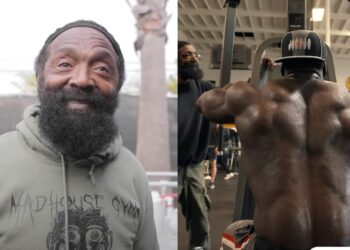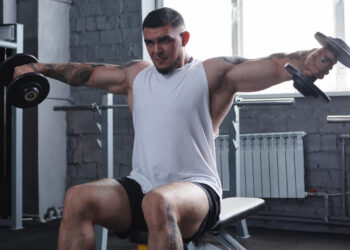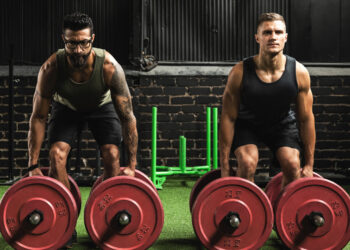Lifting cues can be some of the most helpful techniques and lifting tips or some of the least helpful, depending on the cue. For example, you may have been told that you have to keep your shoulders back during a bench press. If the cue has been to pinch your shoulder blades or even to retract your scapula, then you likely aren’t getting it right. Pinching your blades alone is not going to fix the all important thoracic extension lack that is making the rounded shoulders more prevalent.
In this above video, Jeff Cavaliere covering not just the right cue for that situation but the seven best for virtually every lift to hope you get more out of them. Going back to this situation the better cue would be to lift your sternum or chest bone. If you imagine the top of your sternum as the rim of a glass of water you would want to make sure that your glass didn’t tip forward and spill out the water. If you lift your sternum to level off the glass and avoid tipping, you won’t just fix your shoulder posture but you will get your shoulder blades to sit back and down against your rib cage rather than artificially pinched.
The next best cue you can use when lifting is to pull with your elbows when doing any pulling exercise for your back. For example, if you are doing a lat pulldown or even a pullup, the best way to initiate the movement is by concentrating on the movement of the elbows. They should be the driver of the lift rather than the hands. This is easier said however as we tend to focus on the hands and what we are holding when we move our arms. This sets up the likelihood that you will pull too much with your forearms and too little with the muscles you are trying to work.
For the lower body, particularly with squats and deadlifts where people encounter pain in their knees hips and back from having flat feet, you will want to push out with your ankles. This is a great way to dynamically fix your arch and create a better alignment of the lower leg during the descent. Since this is one big kinetic chain, a better alignment here will put the knees, hips and lower back in a better position to operate safely.
Level Up Your Fitness: Join our 💪 strong community in Fitness Volt Newsletter. Get daily inspiration, expert-backed workouts, nutrition tips, the latest in strength sports, and the support you need to reach your goals. Subscribe for free!
Moving on, two other issues in the lower body are to squeeze your cheeks to finish hip extension and to hide your hands when trying to establish a proper hip hinge on your lifts. Each of these is crucial to mastering the mechanics of the pelvis and lumbar region when lowering your body to the floor in any leg movement or even thruster.
Finally, learn to squeeze the bar or dumbbells when lifting. This is often something that is overlooked and it is costing you energy that could be directed through your hands and into your arms for more upper body stabilizer activity. Experiment with this in your very next set of any upper body exercise and you will feel the difference on your very first rep.








